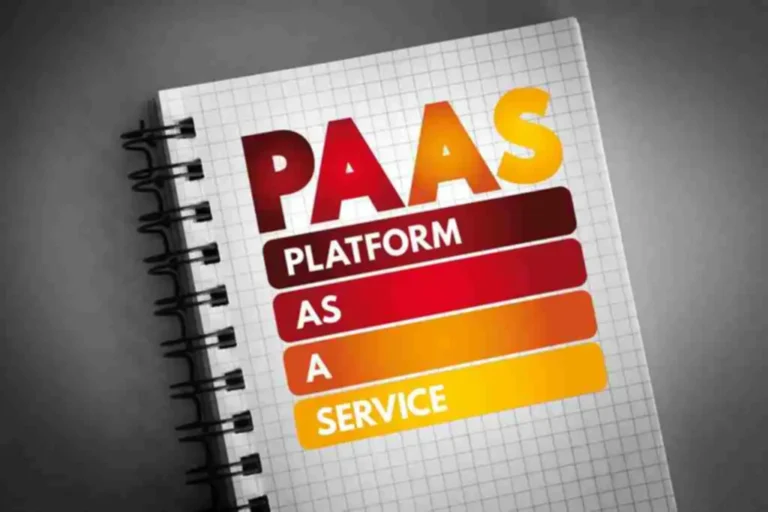Make certain that the long-term benefits ai trust of microservices will outweigh the disruptions to your small business that the migration process will cause. A typical monolithic architecture software has a front-end user interface, a server-side interface, and a codebase (software-supporting database). If your wants are simple and you need a fast turnaround, monolithic is the plain choice.
Monolith Beneath Scrutiny: Benefits And Drawbacks
Its out-of-the-box distributed tracing and code-level insights provide end-to-end visibility across complicated application environments. Another critical issue is microservices’ capabilities are expressed with business-oriented APIs, and the implementation of the service is defined monolith vs microservices advantages purely in business terms. Additionally, these microservices are independently deployable by fully automated deployment tools. In developing critical functions and companies, it’s crucial to grasp legacy software program development. One of the most popular arguments for moving into microservices structure is that it could make the software simpler to take care of by decomposing and decoupling it into smaller units.
Execs And Cons Of A Microservice Strategy

Every component of this system, including the information access layer, business logic, and user interface, is deployed and integrated tightly together on this design. To resolve which structure is true on your project, consider factors such as project size, complexity, staff structure, and know-how stack. Smaller tasks with limited complexity could benefit from the simplicity of a Monolithic strategy, whereas giant, complicated applications would possibly find Microservices extra appropriate.
Benefits Of Microservices-based Structure
This approach breaks down the monolithic block into separate, unbiased parts. In this instance, we haven’t adopted the academic definition of a microservice architecture, the place each service is modeled around a business area. Instead, we have chosen to be pragmatic and create microservices as a end result of we wish to use a specific expertise and because we want to have the power to scale some companies independently. In monolithic architectures, all components of the applying are united through a single codebase.
Although we decided that microservices aren’t the right method for now, this might change in the future. Having logically separated parts of the domain, full control over the setting, and using the newest model of .NET, it was tempting to implement modules mentioned above as microservices. However, we decided to start with a monolithic strategy as an alternative, which proved extra efficient and allowed us to concentrate on characteristic improvement and fast supply. Monolithic and microservices architectures each have their fair proportion of pros and cons.
So, to return once more to the music app instance, even if the purchase and obtain functions crashed, prospects would nonetheless be able to access the user interface and play music they already owned. Connect and share information inside a single location that’s structured and easy to go looking. I have just printed a model new course — Design Microservices Architecture with Patterns & Principles.
Projects ought to contemplate their needs and start with a modular monolithic method if they may transition to microservices later. If you plan to expand your ecommerce enterprise, you then might want to assume about migrating from a monolithic to a microservices structure. Monolithic functions may be more suitable for edge deployments where sources are restricted, while microservices can leverage edge-cloud hybrid architectures for optimal efficiency and scalability. The adoption of DevOps practices and continuous delivery pipelines has made it simpler to handle the complexity of microservices. Automated testing, deployment, and monitoring instruments have lowered the overhead of managing multiple companies.
- This means that, to carry out properly, the staff has to have full competences (developers, design, and DevOps) to construct and ship new options to manufacturing.
- Deliver unparalleled digital expertise with our Next-Gen, AI-powered testing cloud platform.
- In our blog How microservices allow enterprise agility and e-commerce success you’ll have the ability to read extra concerning the background, challenges and benefits of microservices.
- Independent services interact with one another via interprocess communication mechanisms, typically APIs.
- If you fall into this class, start with a modular monolithic approach so that it’s straightforward to pivot when the choice is made to maneuver to microservices-based structure.
In this setup, the cloud provider would have some commonplace microservices obtainable as a perform name. With container orchestration instruments like Docker Swarm and Kubernetes, containers could be quickly deployed to scale up microservices. This means there is not any need to trace vulnerabilities in lots of of small components.
Like every little thing, these two technologies both have their benefits and drawbacks. Monolithic architecture is a solid answer for easy eCommerce purposes or weblog platforms, especially when ongoing modifications and growth are not predicted. Microservices have grown to turn out to be a greater match for complicated functions and are the trendy solution in a time when fixed enchancment and improvement of sites and providers is the norm. Developers and businesses creating a brand new software face numerous decisions, and tips on how to architect that software is one that may have trickle-down effects for many years.

With everything going through the identical software, cross-cutting issues corresponding to logging, dealing with, caching and safety are simply addressed because memory, house and resources are shared. The monolithic approach also comes with efficiency advantages, since shared-memory access is quicker than inter-process communication (ICP) for instance. Hence, for microservices structure Kubernetes and Docker are an important part of the infrastructure. Since these microservices are often used as modules for other applications as well, many utility are deployed on cloud. Such a setup also aids in gathering additional compute assets when necessary. In summary, containerization on cloud optimizes the infrastructure prices for microservices-based architectures.

These providers function with unique business logic and dedicated databases, serving a particular objective. Each service undergoes update cycles, testing strategies, deployment, and scaling. So, within the 2010s, they developed what’s now called microservices architecture.
DigitalOcean supports all kinds of functions, from basic websites to complicated Software as a Service solutions. From Droplet virtual machines to App Platform, our Platform as a Service offering, and Managed Kubernetes, we provide the instruments you have to build and grow your purposes. Choosing the proper software program architecture is among the core selections to make. Fortunately, with clear requirements and an understanding of the first software program architectures, making a selection could be comparatively straightforward. However, apps with monolithic structure are more difficult to replace and modify in the long term.
This means that you can construct and deploy providers whenever you like with out having to rebuild the rest of your application. This is especially true in Ruby on Rails, which lends itself properly to constructing monoliths as a result of world availability of all code at an utility level. Monolithic architecture can take an utility very far since it’s simple to construct and permits groups to move very quickly to start with to get their product in front of shoppers earlier. With a deep understanding of these languages, he is proficient in constructing dynamic and interactive person interfaces. He can additionally be well-versed in frameworks like Tailwind and Bootstrap, enabling him to create visually interesting and responsive software program apps.
The distributed nature of a microservice structure makes it extremely scalable, each as demand grows and as your devops teams expand. Microservices let you scale up particular parts of the appliance, so you’ve comprehensive management over how the app is performing at any time. With instruments like Kubernetes, you cannot only gain insight into how each component is performing, but you can establish autoscaling protocols for seamless efficiency, even during peak demand. In a microservice architecture, all the components of an utility are broken into unbiased, loosely coupled modules with distinct features. Each module, or service, has its own repository, its personal logic, and its personal deployment course of. Independent companies work together with one another through interprocess communication mechanisms, usually APIs.
On the opposite hand, utilizing microservices requires time and skills, and could also be overly complicated for some functions. In contrast, the disadvantage of microservices architecture is that it requires a lot of planning up-front. Developers are required to identify varied capabilities that can operate autonomously and design cohesive APIs. Each microservice operates as a self-contained software package deal, requiring developers to containerize them before deployment. Containers encapsulate the microservice’s code and dependencies, guaranteeing compatibility throughout different platforms.
Transform Your Business With AI Software Development Solutions https://www.globalcloudteam.com/ — be successful, be the first!
